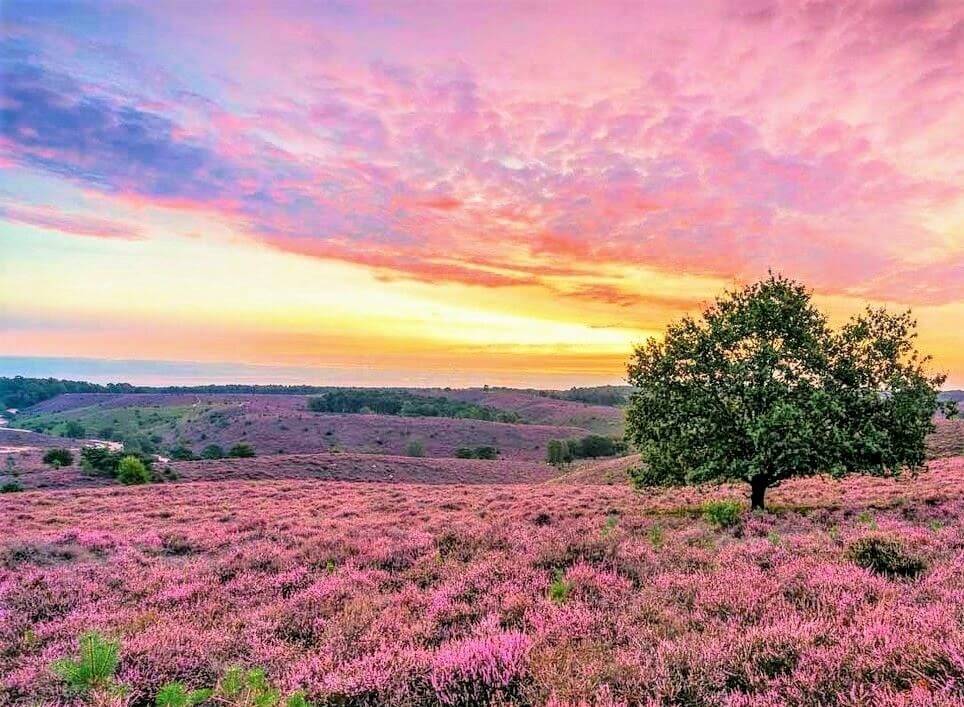One of the most popular attractions in the Netherlands, Hoge Veluwe National Park (Nationaal Park De Hoge Veluwe), is only eight kilometers north of Arnhem. This massive park is the country’s largest continuous nature reserve and is notable for its diverse scenery, which includes everything from dense forests to high sand dunes. Here are the top 7 reasons why you should visit Hoge Veluwe national park in the Netherlands.
Why Should You Visit Hoge Veluwe National Park?
One Of The Famous Attractions In The Netherlands
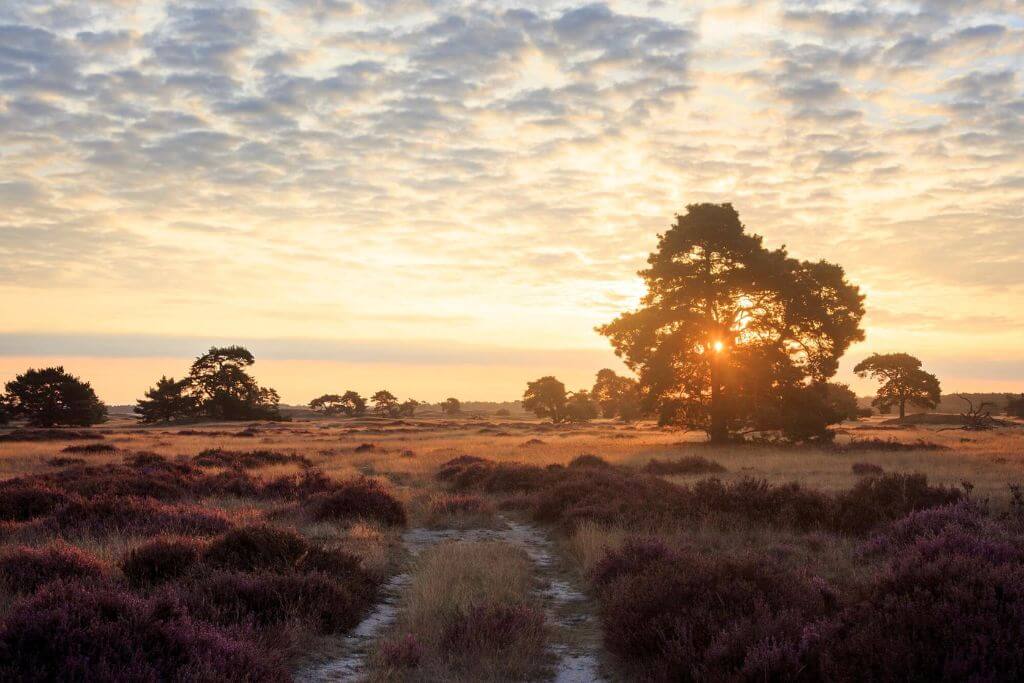
Hoge Veluwe National Park is well-known for its diverse landscape, which includes thick forests, heath, and even sand dunes. Hoge Veluwe National Park, possibly the best preserved and certainly the most geologically interesting of the country’s national parks, consists of a large area of sandy soil formed during the Ice Age. Moraines (large areas of rocky glacial deposits) standing between 80 and 100 meters high interrupt this fascinating scenery in the south and east.
The park’s current appearance dates back to the Middle Ages when patches of forest were cleared for cultivation. Sheep were grazed in the exposed areas and on the region’s heathland expanses. Over time, sand was blown off these bare patches, sometimes burying entire villages, and dunes built up, reducing some areas to the wasteland.
To prevent further drifting, reforestation schemes were launched in the nineteenth century. Meanwhile, rainwater filled some of the depressions, forming lakes.
The Best Wildlife Spot In The Netherlands
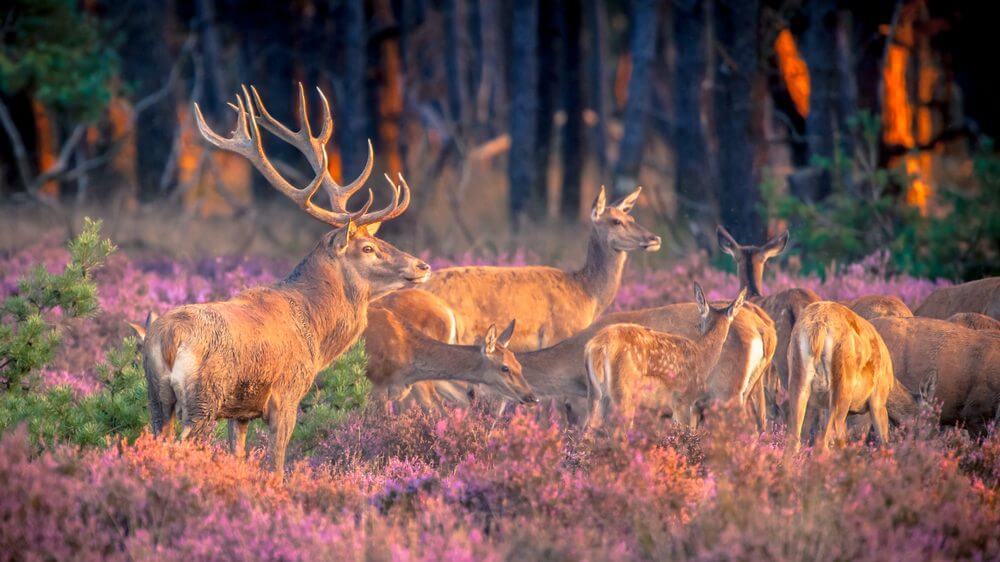
Hoge Veluwe National Park is an excellent destination for birdwatchers and wildlife enthusiasts. Visitors can see a variety of animals, including red deer, roe deer, and wild pigs, from well-placed observation points in the center and northwest sections of Hoge Veluwe. Moufflon, a species of wild sheep native to Sardinia and Corsica, is also frequently seen. During the winter, the park attracts a wide range of birds, including marigold finches, titmice, chaffinches, woodpeckers, jays, magpies, and thrushes.
If you’re here to see the wildlife, the best times to go are early morning and late evening, so plan your trip accordingly. When you arrive, make sure to get a park map. It describes the locations of wildlife observation stations and refuge areas, some of which are easily accessible by car. These can be purchased at the park’s entrances, visitor center, tea house, or park shop.
The park has 500 different plant species for those who are interested in flora. Many of these are rare and unique to the area, such as fungi, mosses, and lichens. The protected common juniper; a small insect-eating plant called a sundew; dwarf viper’s grass (one of the country’s rarest plants); and the lovely marsh gentian, well known for its beautiful blue flowers, are among the plant highlights.
The park also has large, dense woodland areas with conifers (particularly pine), rhododendrons, and a variety of deciduous trees. It is especially notable for its abundance of red oaks.
You Will Have Biking Adventures In Hoge Veluwe National Park
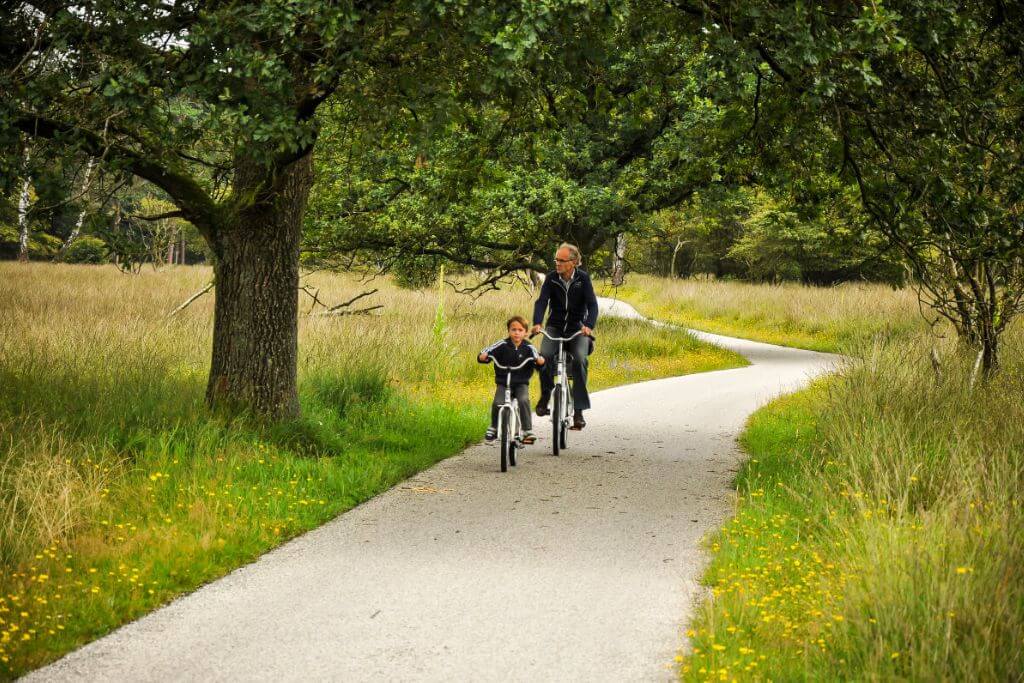
Hoge Veluwe National Park, like much of the Netherlands, is mostly flat, making biking one of the best ways to enjoy its breathtaking scenery. And, given that the Netherlands is one of the world’s most bike-friendly countries, it’s only natural that over 1,700 of the country’s famous White Bikes have been made available for use throughout the park.
Best of all, this exciting mode of transportation is included with park admission. Simply show up, ride as far as you want, and then return the bike to one of the convenient distribution points or park entrances. Specially designed children’s bikes, as well as versions with front or rear child seats, are also available.
Lockable Blue Bikes are available for rent from the Bicycle Workshop next to the visitor center for those who want to keep their bike for the duration of the day. There are also tandem and electric bikes available. Wheelchair bikes and trikes, as well as bikes designed for easy mounting, are free for those with special needs. White Bikes can be obtained from the Marchantplein, the Kröller-Müller Museum, and the Jachthuis Sint Hubertus, in addition to the three main entrances.
Take A Hike In Hoge Veluwe National Park, Why Not?
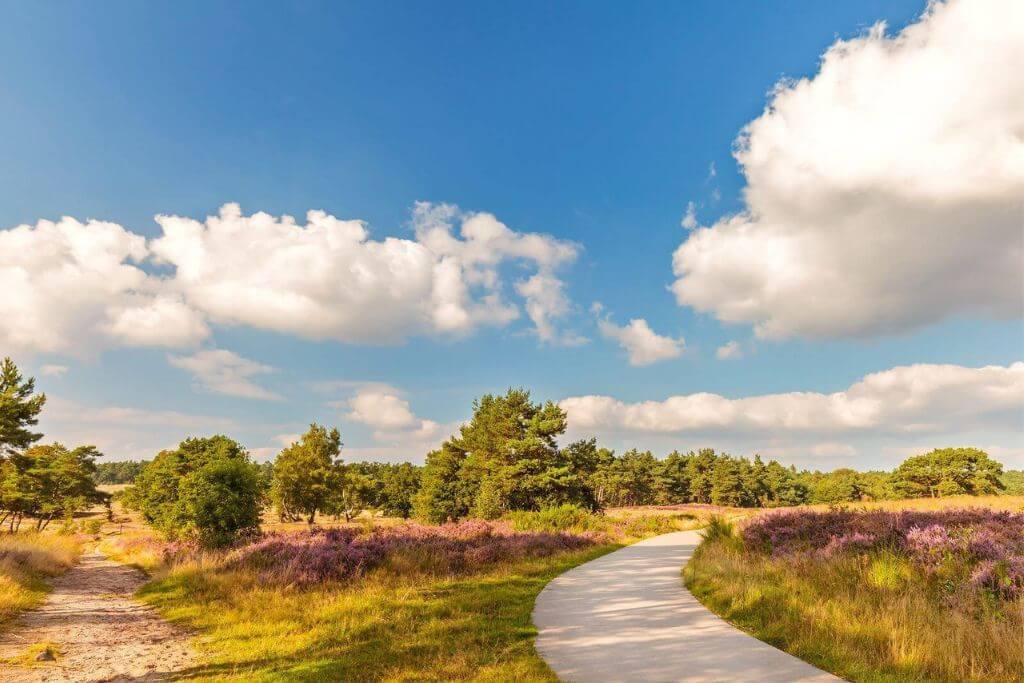
Do you want to go at a slower, more relaxed pace? Hoge Veluwe National Park also has a number of well-marked rambling routes and footpaths. These easy-to-follow routes, which include wildlife-viewing stations, are clearly marked (just look for the wooden posts).
Routes range from three to eight kilometers in length, and a variety of self-guided themed walks are available. Whatever path you take, make sure to get a map when you buy your admission ticket. Longer routes of up to 20 kilometers are also available for serious hikers, and those with toddlers can rent special rugged hiking strollers.
Traveling with pets? Don’t worry. Dogs on leashes are welcome. In addition, convenient rest stops with restrooms are located at numerous locations along the most popular routes.
Do you know Why is the Veluwemeer Aqueduct a Unique Water Bridge in the Netherlands?
Visit Jachthuis Sint Hubertus
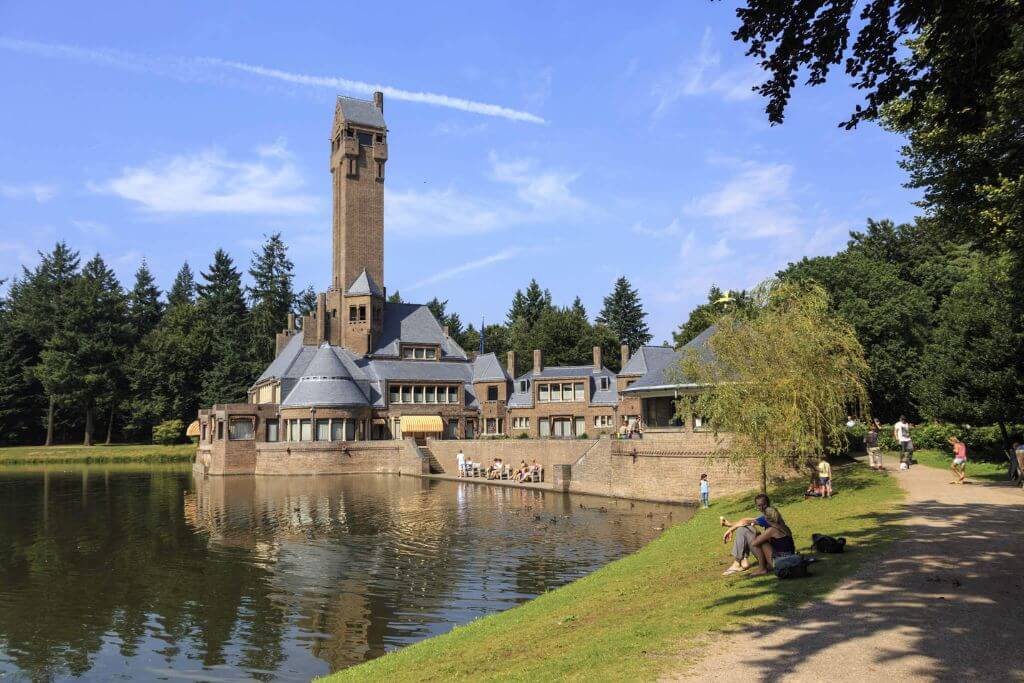
The attractive Jachthuis Sint Hubertus was built as the main residence for the wealthy owners of Hoge Veluwe, Anton, and Helene Kröller-Müller. It was designed by Hendrik Berlage, one of the Netherlands’ leading architects, and completed in 1923. This magnificent mansion, named after St. Hubertus, an accomplished huntsman, contains numerous references and symbols relating to the legend of the great saint, most notably its antler shape (the masonry also incorporates a cross).
The house was also designed to be modern and comfortable. As a result, it includes several technological innovations that were novel at the time, such as central heating, central vac, and an electric elevator.
The house is now a museum known as the Country Residence Museum (Jachthuis Sint Hubertus). Highlights of a visit include displays about the building’s design and the opportunity to see the original furnishings. Admission is only available through guided tours (available in English).
Unmissable Kröller-Müller Museum and Sculpture Garden
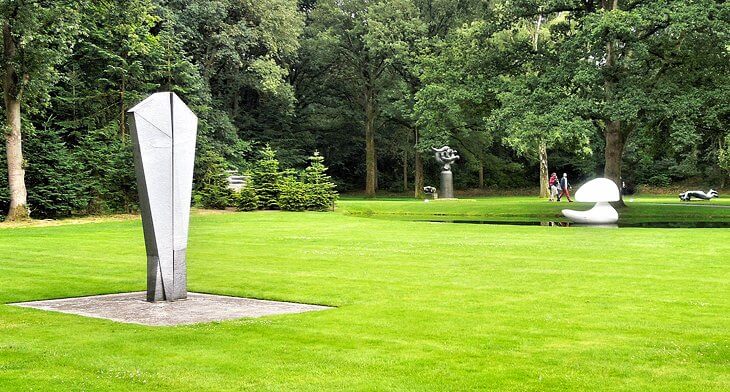
The Kröller-Müller Museum (Rijksmuseum Kröller-Müller) was built to house the private collection of Hoge Veluwe’s art collector owners and houses numerous fine examples of 19th- and 20th-century European art. Built-in 1938, the structure was intended to bring art and nature together, a concept that was carried forward in the impressive glass extension added in 1977.
Among the collection’s highlights are approximately 4,000 drawings, 275 sculptures, and several hundred paintings. The late nineteenth and early twentieth centuries are well represented, with 280 paintings and drawings by Vincent Van Gogh from his time in The Hague and Paris. Art Nouveau works by Odilon Redon, James Ensor, and Jan Toorop are among the treasures on display, as are Impressionism and Expressionism paintings by Edouard Manet, Claude Monet, Paul Cézanne, and Auguste Renoir, as well as Cubism works by Pablo Picasso and Fernand Léger.
Since 1950, the museum’s extension has displayed sculptures, reliefs, and drawings. The superb Sculpture Garden, which includes works by Auguste Rodin, Barbara Hepworth, and Aristide Maillol, is also worth seeing. The museum also hosts a number of enjoyable art programs for children, as well as concerts. There are English-language guided tours available.
Visit The Museonder: Europe’s First Underground Museum
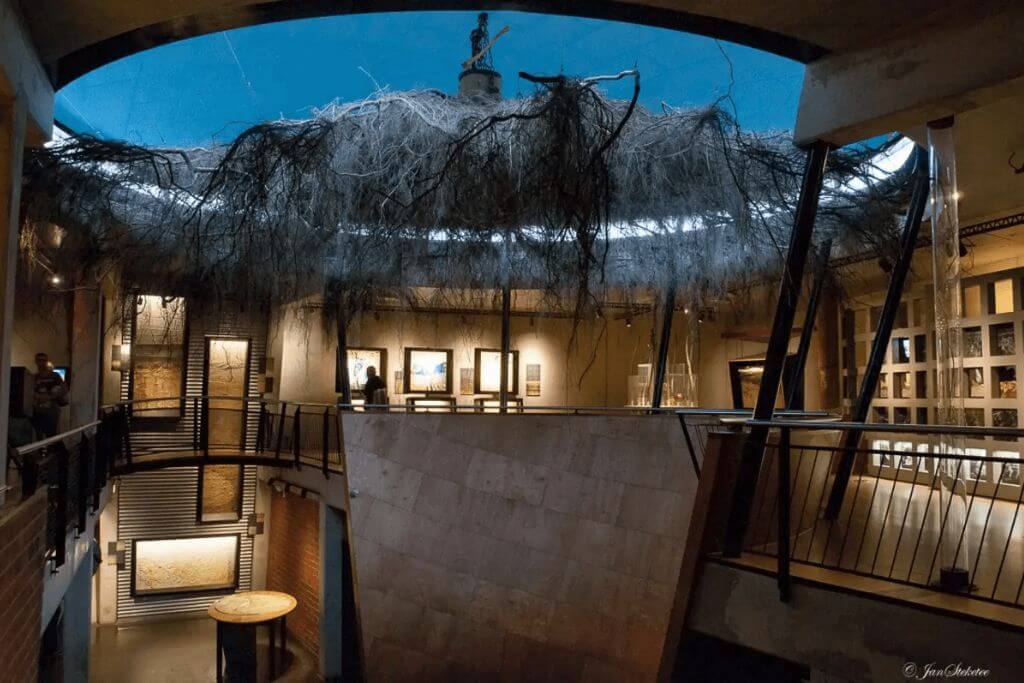
The Museonder is Europe’s first underground museum. In 1993, Museonder opened near the Kröller-Müller Museum. Visitors are taken on a unique journey through a series of subterranean pathways that provide displays and information about the natural history and geology of the Museonder.
Museonder also features skeletons of once-native wildlife from the region’s past, such as mammoths, rhinos, and giant stags. Some exhibits in Museonder focus on organisms that live underground, such as burrowing animals and insects, as well as tree root systems.
Access To Hoge Veluwe National Park
Hoge Veluwe can be reached via one of three entrances: Koningsweg 17, Schaarsbergen, Houtkampweg 13, Hoenderloo, or Houtkampweg 9, Otterlo. When you arrive, go to the visitor center for maps and other information. Guided tours, as well as English-language audio guides, can be purchased here or at the entrance gates.
Read more 7 Fantastic National Parks To Explore The Wildlife In The Netherlands
